The assessment of bearing capacity in shallow foundations on layered soils has traditionally relied upon empirical models, often assuming the presence of a strip footing.
In their recent research, published in the Australian Geomechanics Society journal, engineers Sean Goodall and Richard Merifield have delved into a comprehensive exploration of the three-dimensional bearing capacity. Specifically, their study examines square and rectangular footings situated on a substrate of sand overlying clay using finite element limit analysis.

Overview of models and problem definitions
The objective was to investigate the three-dimensional bearing capacity of square and rectangular footings resting on sand overlying clay using finite element limit analysis. The problem of a footing resting on sand overlying clay is a rather classical and commonly encountered geotechnical problem, for example, a working platform that is used to support a crane or piling rig, which historically have been assessed using empirical methods that require many simplifying assumptions, and as a consequence have some limitations in practice.
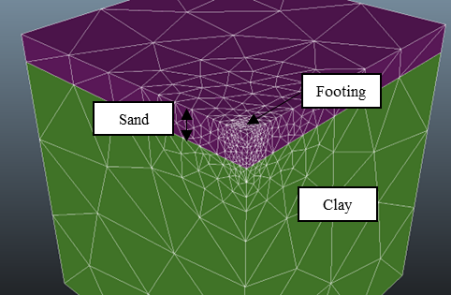
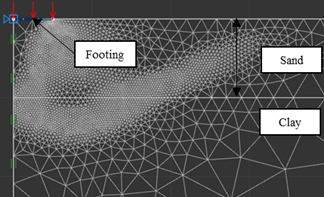
Overview of models and problem definitions
Finite element limit analysis is a particularly advanced method of analysis that can overcome many of the simplifying assumptions and limitations of other methods. One significant benefit, compared to many other methods, is that the finite element limit analysis provides rigorous bounds of the ultimate bearing capacity. There have been a few studies into the sand over clay problem using finite element limit analysis but what makes our study particularly special is the three-dimensional considerations. To the best of our knowledge this appears to be the first study of this scope and size that has applied three-dimensional finite element limit analyses to the sand over clay problem.
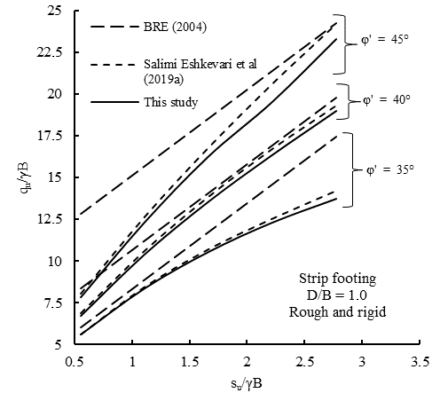
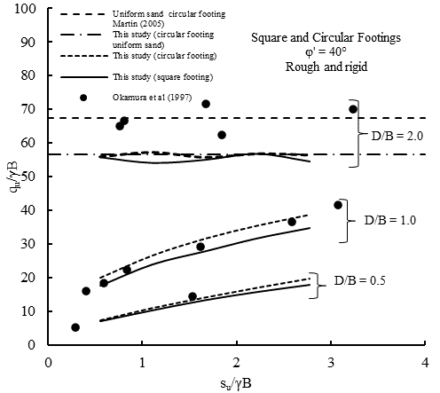
Selected results from benchmarking the solutions and analysis
A benchmarking exercise was performed, which indicated the results of our study compared well with published experimental data and the results of other studies. A parametric study was also performed on a number of variables to provide readers with an understanding of the effect of various assumptions, boundary conditions and parameters.
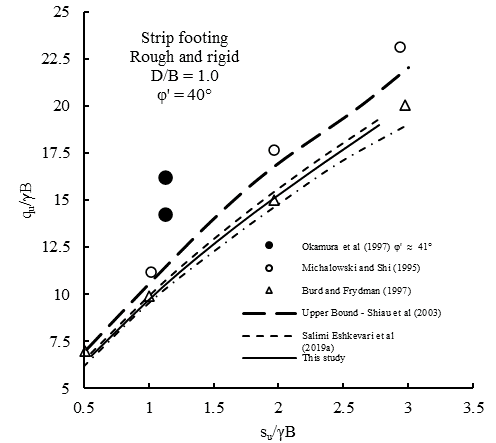
Selected results from benchmarking the solutions and analysis
The results of the modelling have been used to develop dimensionless design charts for a range of commonly encountered geotechnical conditions, working platforms and more generally footings resting on sand overlying clay. It is hoped that the result of this study assists with both safer and more sustainable working platform designs in industry.

Result from the design chart - Limit analysis

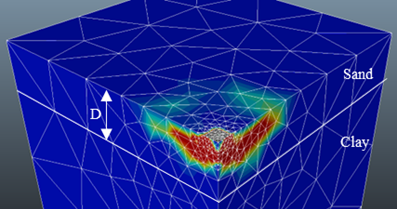
Selected results from the analysis showing failure mechanism
Sean Goodall and Richard Merifield.